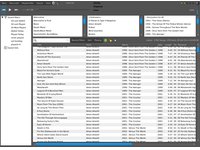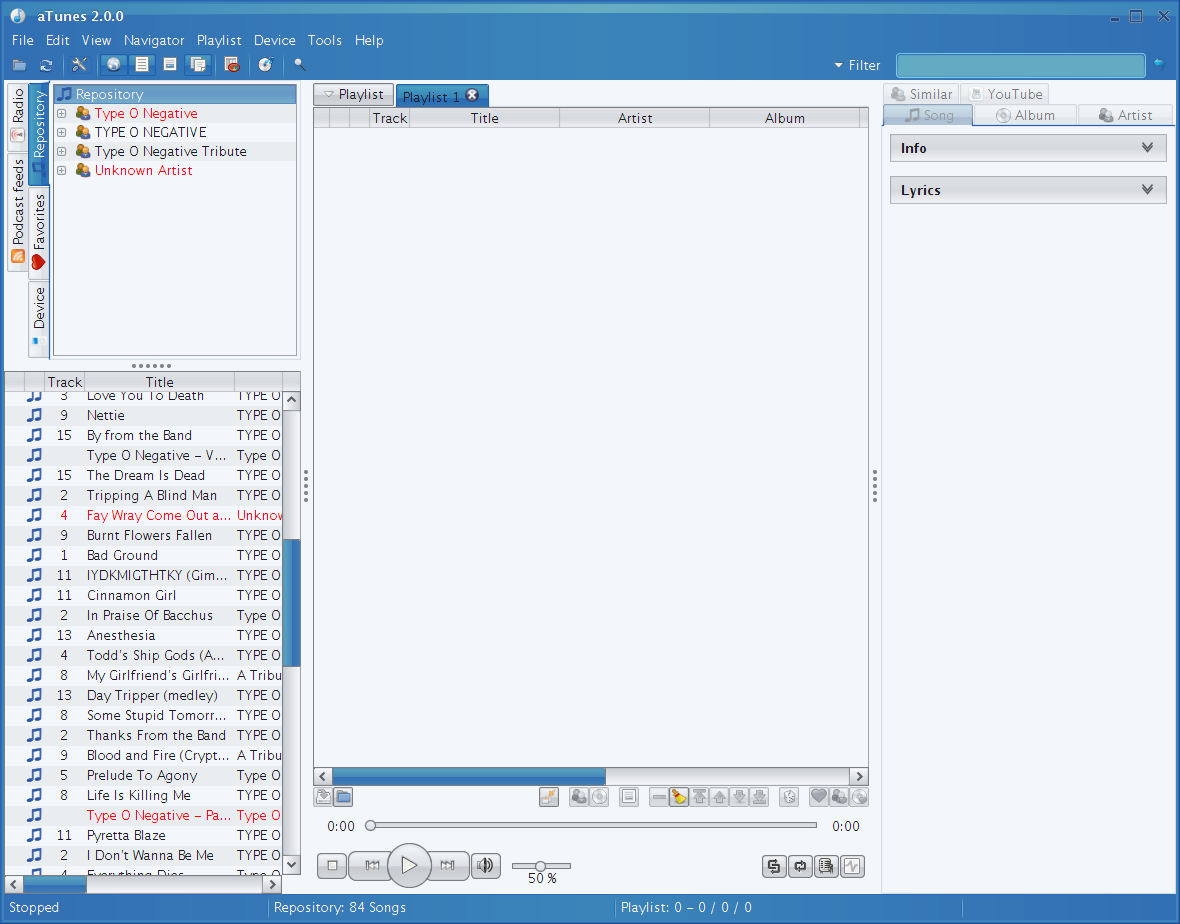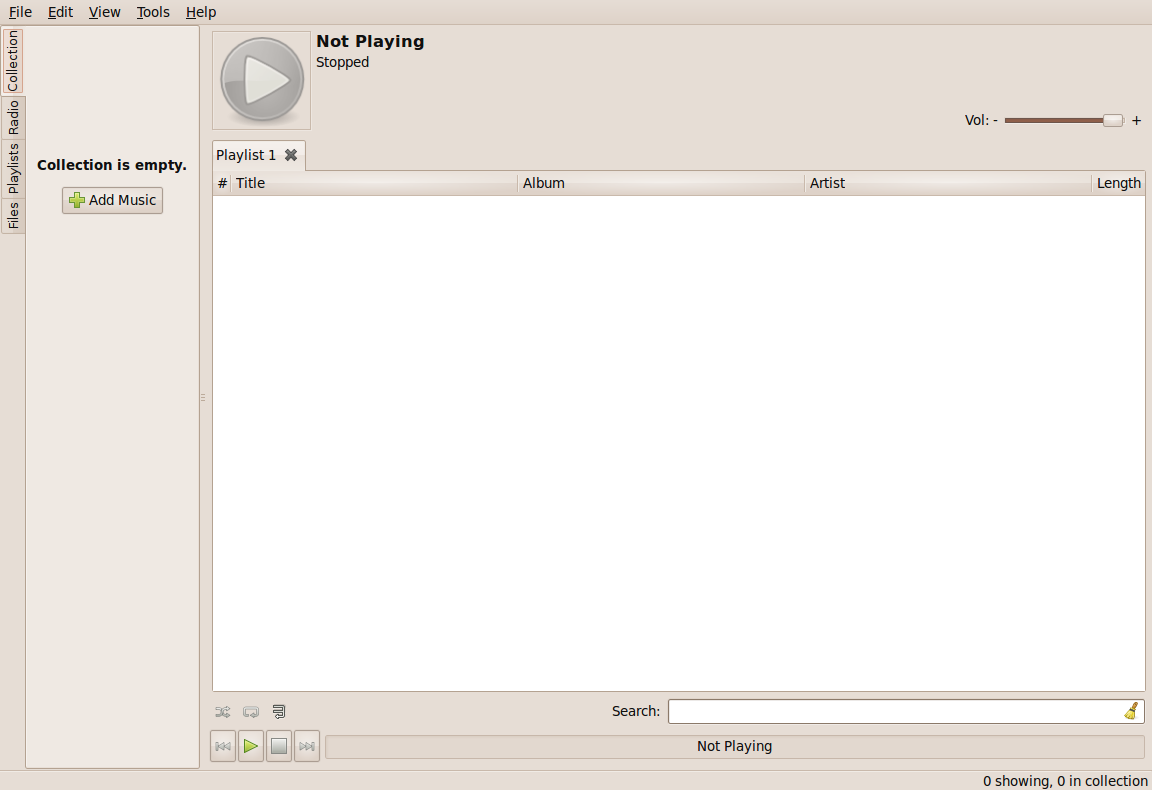Tom's Definitive Linux Software Roundup: Audio Apps
Music Managers
These music management applications are capable of playing music from different sources, organizing large collections, and some even have extra features through plug-ins. They are much more than simple audio players, but lack or fail at iPod support out-of-the-box. Essentially, these applications are like modern version of WinAmp, minus the sweet visualizations.
Guayadeque (v. 0.2.7-1227)
Guayadeque is a well-rounded music management application with all of the organizational and playback capabilities needed for large and diverse libraries. For organization Guayadeque supports tags, labels, and star ratings. Album cover and lyrics fetching is included as well. Automatic silence detection, resume from the last closed session, and smart playlists make Guayadeque very intuitive. Beyond the usual local audio files, Guayadeque can play Last.fm, Libre.fm, SHOUTcast radio, and podcast subscriptions.
The user interface is highly configurable with 28 optional view settings, not including full-screen. Fortunately, with all of these options, Guayadeque allows you to save and load multiple custom UI layouts. The default configuration is essentially split in half. Right below the menu bar, on the left-hand pane lies the play controls and playlist. The right-hand pane is tabbed at the top to switch between library, radio, Last.fm, lyrics, playlists, podcasts, browser, and file tree functions.
Guayadeque is a relatively new app to keep an eye on, though it has a pretty nice feature set already.
Listen (v. 0.6.2)
Listen is a music management application for the GNOME desktop. Along with audio files like MP3s, Listen handles Last.fm and SHOUTcast Internet radio, as well as audio podcasts. Listen also fetches album art, lyrics, and Wikipedia information about the artist. Basically, all of the features that other GTK music managers have. While our test iPod was detected by Listen, it was only in file browser view--no easy sync, unfortunately.
Get Tom's Hardware's best news and in-depth reviews, straight to your inbox.
aTunes (v. 2.0.0)
aTunes provides a ridiculous amount of information and number of ways to sort through your music. There is even a statistics tracker that can show you (in graph form, no less) what you've been listening to.
Negatives include a splash screen, and the fact that system theme and window decorations do not apply to this application.
Panes divide the UI into sections and the view menu can disable most of them. aTunes makes use of tabs to switch between functions like radio, podcasts, library, favorites, and devices. Unfortunately, our test iPod Nano was not detected by aTunes in the device tab.
Exaile (v. 0.3.0.1)
Exaile is yet another iTunes clone for GNOME. The feature set is standard fare, including album art/lyrics fetching and Internet radio (like SHOUTcast and Last.fm).
The UI is clean and efficient, employing vertical tabs along the left-hand side of the screen for switching between functions. Tabs are also used above the main area, allowing for multiple playlists. This application has a lot of sorting options, with a possible 16 sortable information columns. Other than a needless splash screen, Exaile is pretty much the same as other GTK music managers, though our test iPod was not detected by this application's device manager.
Foobnix (v. 0.2.3-1)
Foobnix is a Russian-developed music management application. And while the Web site is in Russian, this app is worth the Google translation. Besides local files, Foobnix can utilize online radio stations. Although most of the included presets are Russian, Last.fm is supported.
Foobnix is very fast and responsive, even when adding media to your library for the first time. Hovering on the notification area icon previews the album cover of the currently-playing song, which is automatically fetched. Right-clicking the icon brings up a play control pop-up window that disappears when the cursor leaves its borders.
The minimalist user interface is about as efficient as it gets; one could easily mistake Foobnix for a player, not a full-fledged manager. There is no menu bar. Instead, the main toolbar and buttons throughout the window house every function. The toolbar contains basic play controls, volume, and an adjustable progress bar. The left-hand pane houses the music library, collapsible by artist and album. Playlists and media from different sources appear in tabs on the right-hand pane, and each is saved for the next time the player is opened. You can even perform searches for content across various online sources, including streaming video!
Foobnix is a great music manager, perfect for older or mobile systems. We were really surprised by the quality and capabilities of this app. It a shame that it mostly flies under the radar.
Jajuk (v. 1.7.1)
Jajuk has all the sorting options that aTunes has and more. The creators of Jajuk really figured out almost every conceivable way to sort through, play, and tag your music. You can create bookmarks, mark as a favorite or as a novelty, sort by genre, artist, album, song, similar artist--there's simply too much to fit in a paragraph.
Jajuk comes with a ton of Web-based radio stations already set up, and it can also search for Wikipedia information, not only on the artist like most others, but also by the album or track. Then there are the statistics. Jajuk displays graphs showing what you've listened to by genre, as well as visually displaying how your collection has grown over time. This heavy-duty music manager is capable of taming music libraries of any size. iPod support, on the other hand, is handled as a file browser. So, there's no sync.
There are also downsides to Jajuk. Like aTunes, Jajuk uses foreign UI conventions, making this application stick out like a sore thumb no matter what desktop environment you are in. Jajuk also has an always-useless splash screen. Jajuk does install another application as well. Now, it's entirely usual for a Linux application to require support packages, such as shared libraries or frameworks, but to install another end-user application is not. Jajuk comes with Entagged, a file-tagging application.
If the developers would make a native Qt or GTK+ version, lose the splash screen, fix iPod sync, and drop the automatic inclusion or integrate the functions of Entagged, it could be the ultimate music manager.
gmusicbrowser (v. 1.0.2)
gmusicbrowser is a music management application designed for very large music libraries. For organization, this app sports user-defined star ratings and labels. These can be filtered, sorted, and searched just like album, artist, genre, and song name. An available Last.fm plug-in provides access to streaming content.
The gmusicbrowser user interface is highly customizable. This application has 19 different UI view modes! From a simple media player like VLC to a full-screen iTunes-like layout, gmusicbrowser should please anyone. A notification area icon provides quick access to essential playback controls and basic file menu items.


-
nevertell Great stuff, I'll try out some of those.Reply
Although I had tried Banshee a few years ago, and it just couldn't deal with 30 gb of music. -
machvelocy D'oh.... i didn't know before if you can sync ipod in linux (yes i'm a linux n00b).Reply -
pelov Linux has always been quite robust in the audio segment, particularly if you consider that the majority of apps are completely free and hog less resources. Move over apple.Reply
Though some apps are .deb or .rpm, or what have you, depending on the linux distro you can still open/install them just fine.
Good writeup :) -
haplo602 I miss xmms in the list, just for nostalgia.Reply
Audacious fits my bill for a music player. Simple yet capable. -
admiral_grinder I have tried several of the Winamp clones on my Ubuntu box, but I'm using Audacious to be the better. Out of all the clones I have found the playlist sorting options are a bit weak. While you can sort by Artist or by Title, you can't do both. They do have the important one of sorting by path and filename though so you can que up albums in the right order.Reply -
castlefox Thank you Toms for doing a linux article !!!!!Reply
I didnt know those ipod syncing programs actually worked. I cant wait to try out Banchee in Ubuntu 11.04
PS> Type O Negative and all the other metal put a smile on my face :) -
Crazy Hitchhiker Nice to see that you are still doing linux articles! I'm a little curious why several programs were left off, though: VLC, Audacity, and WinFF. Oh well, just keep up the good work!Reply -
castlefox Crazy HitchhikerNice to see that you are still doing linux articles! I'm a little curious why several programs were left off, though: VLC, Audacity, and WinFF. Oh well, just keep up the good work!Reply
VLC is more of a video thing.... it does stand for "video lan client"



































